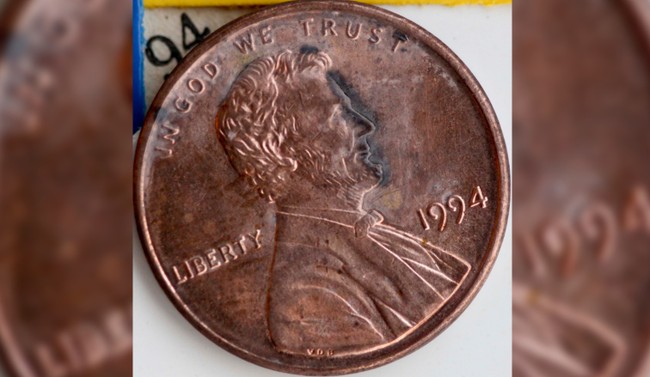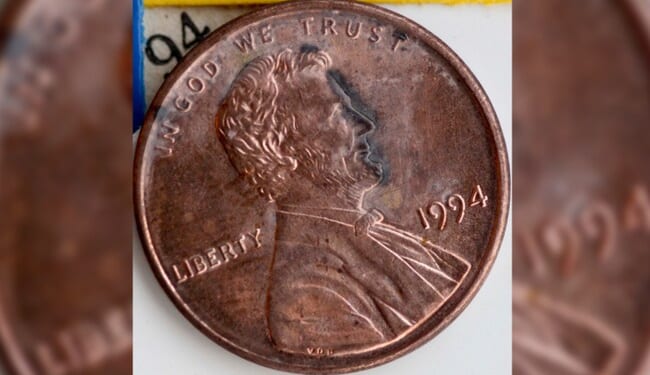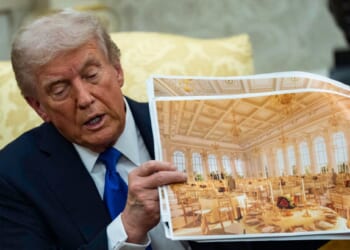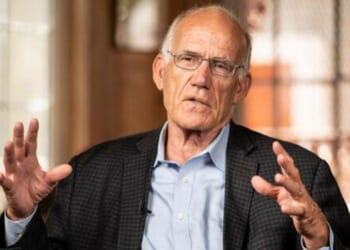
While some deaths come with ceremony, others simply fade away, unannounced, like an old workhorse left to pasture.
That’s how the American penny is dying: no last ride or parade; just the slow silence of irrelevance.
The penny sat at the bottom of every pocket and purse for generations, clinking against nickels and dimes like old friends. Kids dropped them in gumball machines, grandfathers stacked them in neat rows for rolls, and shopkeepers kept a jar for “take a penny, leave a penny.”
Something so humble became the cornerstone of everyday exchange.
Today, it’s merely an afterthought.
From Lincoln’s Face to the Marketplace’s Waste
Only the U.S. government could lose money while making money: The penny costs nearly four cents to mint.
In an era where inflation makes a five-dollar bill feel light, stamping a coin worth one cent, using zinc, copper plating, and labor, becomes economic comedy. Dinosaurs in D.C. might call it tradition. But the rest of us? We’d call it nonsense.
The thing is, it’s not just cost; the world has moved on, replacing jingling pockets with tap-to-pay, credit cards, and apps. Trying to give coins your grocery clerk results in a frown; they don’t want your handful of coins anymore, and they slow the line down.
Our society is obsessed with speed, but the penny is the speed bump that reminds us how much slower, and perhaps saner, our world used to be.
A Penny Saved Was a Lesson Learned
One of our Founding Fathers, Benjamin Franklin, the man responsible for the proverb, would be shaking his head today.
“A penny saved” doesn’t mean anything anymore, unless you collect a couple of hundred of them, which might buy you a single stick of gum. But in Ben’s world, thrift was a virtue — savings were tangible, hard-earned, and counted one coin at a time.
I have to ask: doesn’t it feel like we’re burying that virtue by killing the penny? I know, the penny is obsolete, but so is patience, and that hasn’t stopped the market from trading it for convenience.
If we lose the smallest measure of currency, then we might also lose the smallest and most pure measure of value. Once, the penny was a teacher. It the first coin recognized by a child, the first sound of a clank on the bottom of a bank.
The disappearance of the penny will become a quiet civics lesson: how quickly a culture forgets the little things that built it.
The Math, the Madness, and the Inevitable
I know, I know, pennies aren’t needed anymore. In fact, Canada, Australia, and New Zealand have already scrapped their one-cent coins: prices rounded, citizens adapted, and life went on.
America, the at times stubborn melting pot that we are, resisted for two reasons: out of habit and sentiment, two things hardly respected by the modern economy.
Math, when not being racist to some, causes habits to crumble; when producing a single coin costs quadruple its worth, nostalgia becomes a luxury.
Already, retailers are facing coin shortages, leaving signs reading “exact change only” at registers across the country. We’re not seeing a conspiracy; we’re seeing entropy. The U.S. Mint can’t justify keeping pace; rounding is coming whether we like it or not. The ubiquitous price tag that includes the “.99” will be the next thing to vanish, along with the psychology that led people to feel better about paying less than the whole dollar.
When History Turns to Copper Dust
The penny is going the way of other relics that quietly slipped away: the rotary phone, the manual typewriter, and home milk delivery. Each marked an era that came to an end when Americans used their fingers to operate what they used.
For those of us of a certain age, we remember the clack of a typewriter and the touch of the phone’s dial. We see Lincoln’s worn-out face from constant circulation.
Physicality once gave meaning. Now, our money doesn’t even clink; it clicks.
It’s progress, economists argue—and maybe so—but it’s also a form of unmooring. Once we no longer carry the symbols of value, then we take for granted that value exists only where a screen says so.
The penny’s extinction isn’t anything major compared to other news, but I think it mirrors a larger cultural surrender, where we no longer touch what we earn.
Final Thoughts
The death of the penny isn’t based on a fiscal decision, but a moral one.
A relic of thrift is being retired, a grounded exchange of memories of childhood piggy banks and honest arithmetic.
We won’t even notice when the last copper cent vanishes beneath digital dust. But, for those of us who still pick up a penny off the sidewalk, there’s something noble, and schmaybe a little thrill, left in that reflex.
Obviously, the penny is no longer worth the metal it’s made of, but for a country that built its greatness one cent at a time, it’s still worth remembering.
I know, you’re sitting there reading this, asking: What’s the big deal? Call me one of the 58-year-olds in a world where so many things I grew up with are being sent to the dustbin. But when you watch everyday stuff you grew up with disappear, you can’t help but grow a little melancholy.
If you know what I’m feeling, then you know. If you don’t, well:
Get off my lawn.
Why? Because it’s really not about the penny. It’s about the slow fade of small things that once tied us to something real: the sound of a payphone coin dropping, the sound of dial-up, the way a quarter could buy you a Coke while a dime bought a Snickers, and the way a single penny that you toss into a fountain still feels like a wish. We’re not losing just currency; we’re losing evidence that work and worth used to share the same sentence.
I know. I’m the grandpa sitting on a woven lawn chair in the front lawn, wearing shorts, black socks, and sandals while muttering at the clouds. Call me old-fashioned, but as long as a penny rattles in my change jar, I’ll keep it. Not for its value, but for what it reminds me of: a time when even one cent meant you were part of something that added up.
If you’re tired of watching media play defense for every institutional failure, you’re in the right place. PJ Media writers cut through the noise and ask the questions legacy outlets won’t touch.
Help us expose the truth—sign up with promo code POTUS47 for 74% off your VIP membership.








